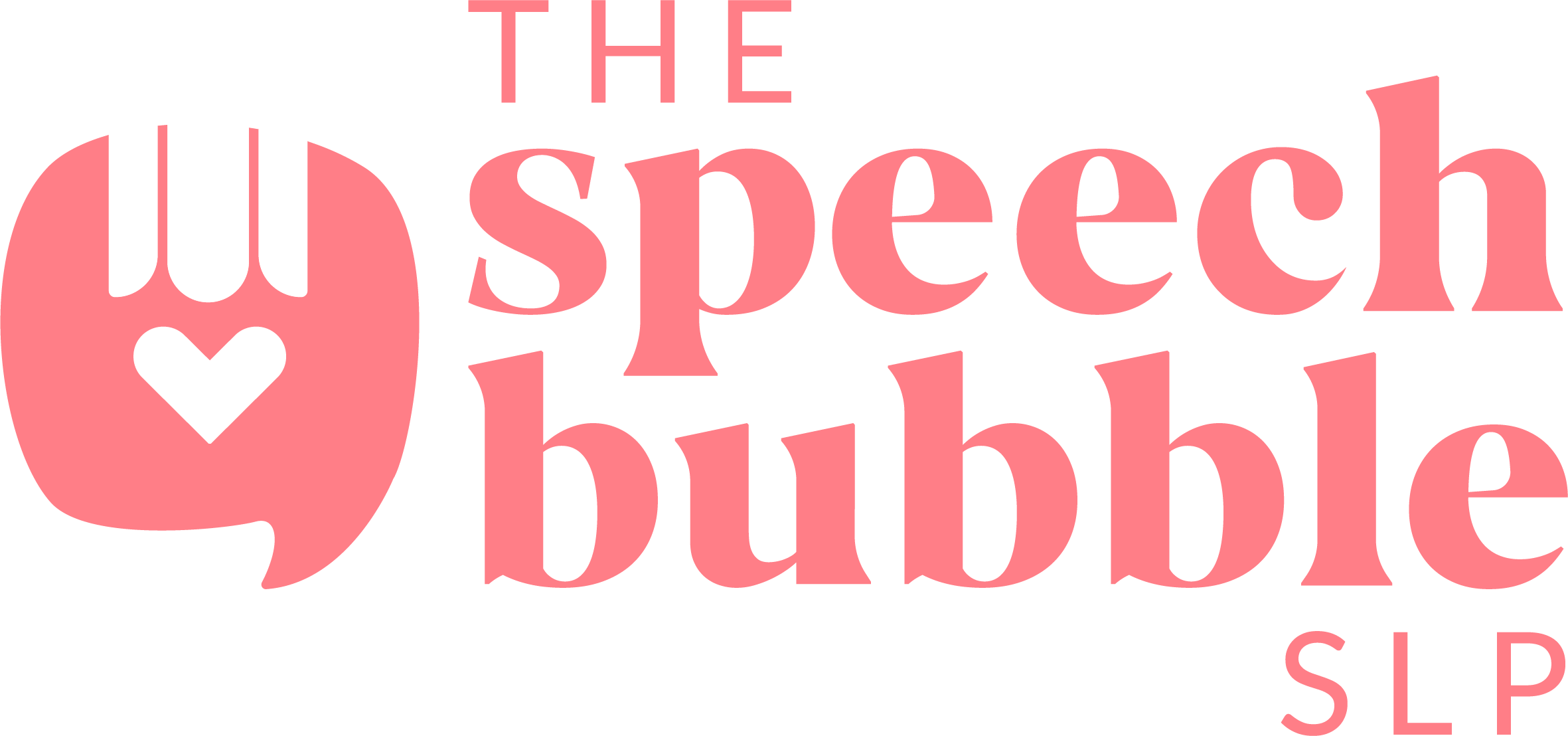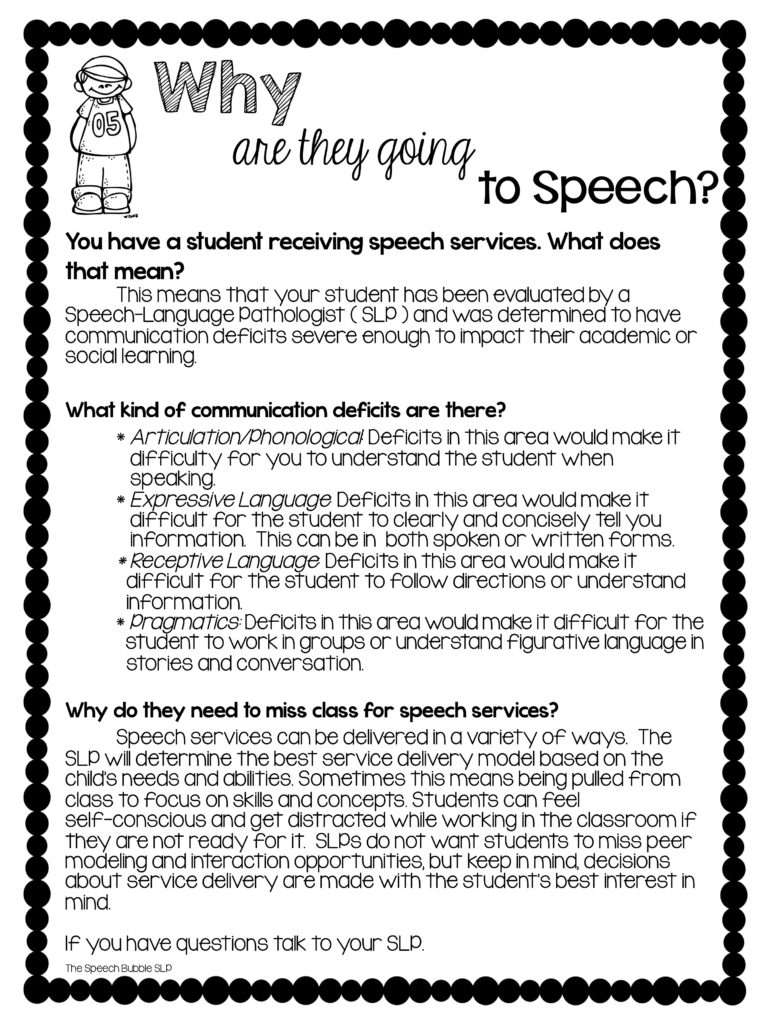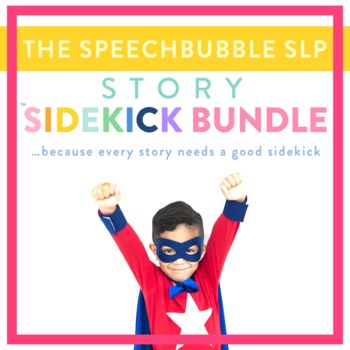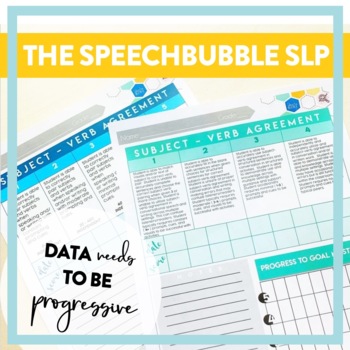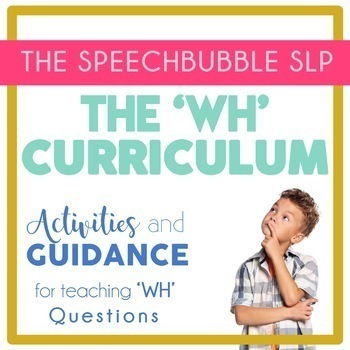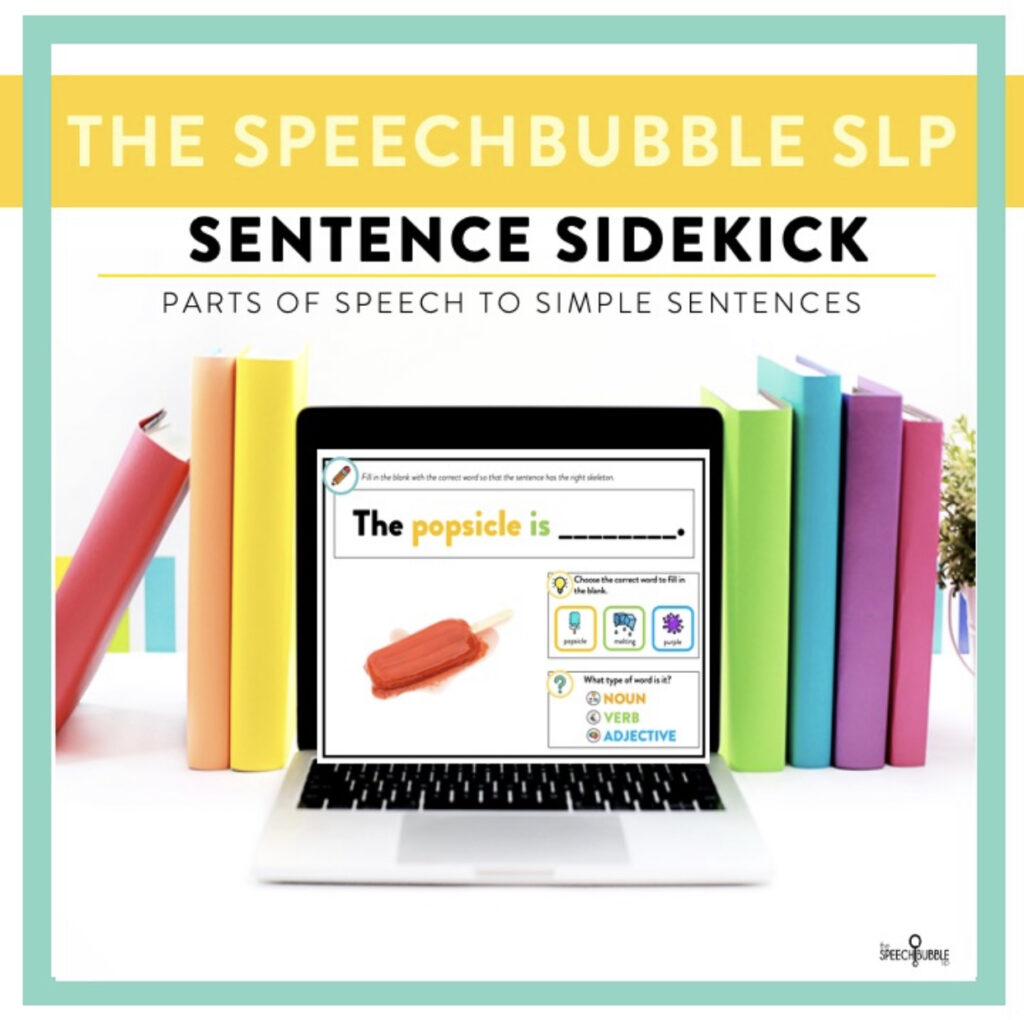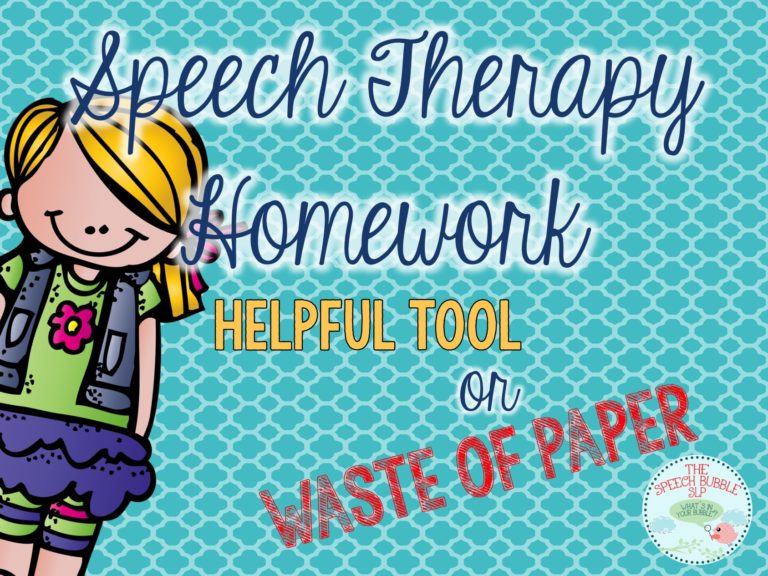A frequent question I get from teachers year round is “Why do they need to go to speech?” When students are mild or do not receiving other services like LD support, the reason for my pushing into the classroom or pulling the student out can be unclear. I created this handout to answer the 3 most common questions I come across in these conversations.

What does it mean that a student is in speech?
When I am explaining this to teachers, I state that even though a student may seem ‘mild’ in terms of needs, the needs are severe enough to impact their academic or social learning without support at that time.
What kinds of communication deficits are there?
I highlight the main areas of communication deficits in academic settings ( articulation, expressive language, receptive language, and pragmatics ) and give examples of how challenges in those areas can impact their academic performance.
Why do they need to miss class for speech?
This is the biggest question by far! I explain to teachers that while there are several service delivery models sometimes pulling the student from class is what is the best model for them at that time. Pushing in can be great, but this can also make the student self-conscious or be very distracting. These behaviors can then inhibit their progress. Is this true for all students, no. But typically SLPs will start pull out services to build skill and concept foundations. Once these foundations are made, push in services to the classroom may be appropriate.
I hope you find this handout helpful! You can download it from my TpT store HERE.

